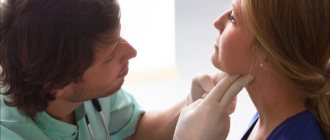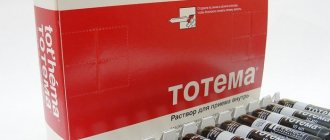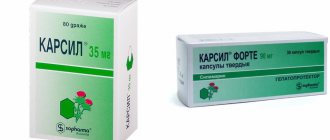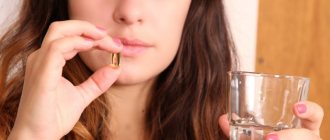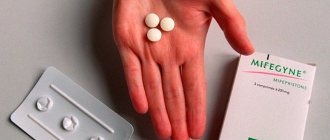Karsil is a drug that belongs to the group of hepatoprotective drugs of herbal origin. Silymarin is the basis of the drug Karsil and Karsil Forte, isolated from the fruits of milk thistle. Silymarin is a mixture of 4 isomers of flavonolignans: silibinin, isosilibinin, silydianin and silicristin. The drug has hepatoprotective and antitoxic effects.
The liver is one of the largest organs in the human body and one of the most important. It performs many functions without which we could not live normally. For example, it destroys toxic substances that enter our body with food, water, and inactivates alcohol. Also involved in maintaining immunity, fat, protein and carbohydrate metabolism in the body.
Karsil is a drug that helps the liver, normalizes metabolism and prevents the destruction of its cells.
Indications for use
Hepatoprotectors appeared in medical practice relatively recently. Until this time, people suffering from diseases such as hepatitis received advice from doctors to eat raw liver of young calves, which was very dangerous - they could become infected with parasites. They also advised me to adhere to a very strict diet: eat a lot of vegetables, apples, avocados, do not eat fatty or fried foods, and be sure to maintain the body’s water balance. Before the advent of drugs such as Karsil.
Karsil as a herbal preparation is indicated for any liver disorders - both for the treatment of chronic diseases and for maintenance therapy for cirrhosis, liver injuries, surgical interventions, bile duct dyskinesia. It is also used in complex treatment for poisoning with alcohol, food or medicine.
Pharmacological properties of the drug Karsil
Pharmacodynamics. The drug belongs to the group of hepatoprotective drugs. Silymarin is a plant active component of the drug Karsil and Karsil Forte, isolated from the fruits of milk thistle. Silymarin is a mixture of 4 isomers of flavonolignans: silibinin, isosilibinin, silydianin and silychristin. The drug has hepatoprotective and antitoxic effects. Silymarin stimulates the synthesis of proteins (structural and functional) and phospholipids in affected liver cells (normalizing lipid metabolism), stabilizes their cell membranes, binds free radicals (antioxidant effect), thus protecting liver cells from harmful influences and promoting their recovery. Thanks to this, the development of steatosis and fibrosis of the liver slows down. Silymarin exhibits metabolic and cell-regulatory effects by controlling cell membrane permeability, inhibiting the 5-lipoxygenase pathway, especially leukotriene B4 (LTB4), and binding to oxygen free radicals. It has been established that the hepatoprotective effect of silymarin is due to its competitive interaction with receptors for the corresponding toxins on the hepatocyte membrane, thus exhibiting a membrane-stabilizing effect. An antitoxic effect in poisoning with toadstool was revealed. The effect of flavonoids, which include silymarin, is also determined by their antioxidant and microcirculation-improving effects. Clinically, these effects are expressed in the improvement of subjective and objective symptoms, normalization of indicators of the functional state of the liver (levels of transaminases, gamma globulin, bilirubin). This leads to an improvement in general condition, a decrease in complaints related to digestion, and in patients with poor digestion of food due to liver disease, it leads to an improvement in appetite. As a result of the use of silymarin, the condition improves after acute hepatitis and chronic hepatitis (when used as part of complex therapy). Pharmacokinetics. After oral administration, silymarin is slowly absorbed into the gastrointestinal tract. Exposed to enterohepatic circulation, does not accumulate in the body. Intensively distributed in the body. According to a study using 14C-labeled silibinin, it was noted that the highest concentrations were detected in the liver, and small amounts in the kidneys, lungs, heart and other organs. Silymarin is metabolized in the liver through conjugation. Glucuronides and sulfates were identified as metabolites in bile. The half-life of silymarin is 6 hours. It is excreted mainly in bile (about 80%) in the form of glucuronides and sulfates and to a small extent (about 5%) in urine.
How to take Karsil?
Treatment is prescribed for both adults and children over 12 years of age. The duration of the course of therapy is determined by the doctor individually. According to the instructions, the treatment should last approximately 3 months. In very severe cases of the disease, 2–4 tablets are prescribed 3 times a day. For light or maintenance therapy - 1-2 tablets 3 times a day. During treatment with any of the hepatoprotectors, it is worth following a diet and a positive water balance, then the treatment will be much more effective.
Contraindications and side effects
According to the instructions, use is contraindicated in case of individual sensitivity to the composition of the drug Karsil.
During pregnancy and lactation, taking the drug is not recommended, as there have been no clinical studies in this area.
Karsil for the liver is not allowed for children under 12 years of age.
Karsil tablets can be taken while driving; it does not affect reaction speed, the nervous system or vision.
The drug contains an estrogen-like substance, so those with endocrine disorders (uterine fibroids, endometriosis) should take it with caution.
Carsil capsules and Carsil tablets should be stored in secondary packaging at a temperature not exceeding 25 °C.
Instructions for use CARSIL®
Treatment with Karsil cannot replace a diet or giving up anything in case of liver damage (for example, alcohol).
Use with caution in patients with hormonal disorders (endometriosis, uterine fibroids, breast, ovarian and uterine carcinoma, prostate carcinoma) due to the possible estrogen-like effect of silymarin.
The drug contains wheat starch as an excipient. Wheat starch may contain trace amounts of gluten and is therefore considered safe for people with celiac disease (celiac disease).
The drug contains lactose monohydrate as an excipient. Patients with rare hereditary problems of galactose intolerance, lapp lactase deficiency or glucose-galactose malabsorption should not take Carsil®.
The shell contains sucrose as an excipient. Patients with rare hereditary problems of fructose intolerance, glucose-galactose malabsorption or sucrase-isomaltase deficiency should not use Carsil®.
The shell contains methyl parahydroxybenzoate (E218) and propyl parahydroxybenzoate (E216). They can cause allergic reactions (possibly delayed).
Impact on the ability to drive vehicles and operate machinery
Karsil® does not adversely affect the ability to drive vehicles or operate machines.
Preclinical safety data
Karsil belongs to the group of practically non-toxic substances.
Mortality has not been established with single oral doses of up to 2000 mg/kg in mice and rats.
Subacute (90 days) toxicity studied in rats administered oral doses of 50, 200 and 1000 mg/kg does not show evidence of toxic changes in the clinical laboratory parameters studied and in the morphology of the internal organs examined. Chronic (180 day) toxicity results studied in rats and dogs given oral doses of 10, 50, 100 and 200 mg/kg show no evidence of toxicity. Carsil® shows no evidence of embryotoxicity or teratogenicity when tested in rats given oral doses of 1000 and 2000 mg/kg throughout the gestational period and in rabbits given an oral dose of 100 mg/kg.
There is no data on mutagenic effects when administered orally to rats at doses of 10, 50 and 200 mg/kg.
Frequently asked questions about Karsil
How to take Karsil?
Depending on the severity of the disease, the drug is prescribed privately. For maintenance therapy - 1-2 tablets per day. In severe conditions - from 2 to 4 tablets at a time, 3 times a day.
How to take Karsil - before or after meals?
Carsil tablets should be taken before meals with plenty of water.
How to take Karsil for prevention?
The prophylactic dose is 1-2 tablets 3 times a day for three months.
How to take Karsil with antibiotics?
The most hepatotoxic antibiotics are tetracyclines, clarithromycin, and rifampicin. In this case, you need to consult a doctor to decide on the advisability of including hepatoprotective agents in therapy.
Side effects
In most cases, taking the drug is not accompanied by any complications. But sometimes side effects are possible:
- allergic reactions (itching, skin rashes);
- diarrhea;
- nausea;
- alopecia;
- dyspepsia;
- problems with the vestibular apparatus.
In rare cases, other undesirable symptoms appear, but they quickly disappear after stopping the medication.
Note!
The description of the drug Karsil on this page is a simplified author’s version of the apteka911 website, created on the basis of the instructions for use.
Before purchasing or using the drug, you should consult your doctor and read the manufacturer's original instructions (attached to each package of the drug). Information about the drug is provided for informational purposes only and should not be used as a guide to self-medication. Only a doctor can decide to prescribe the drug, as well as determine the dose and methods of its use.
Karsil
Karsil is an original hepatoprotector based on silymarin. The latter is a mixture of four flavolignans, of which silibinin is of greatest therapeutic importance, causing the antioxidant effect of the drug. The role of oxidative stress in the development of diseases of internal organs, including the liver, has been confirmed by a number of studies. The formation of aggressive forms of oxygen (peroxides, superoxide radicals) is a routine phenomenon in the process of tissue respiration, but the concentration of these substances increases significantly against the background of alcohol intoxication, various types of liver damage, the presence of an inflammatory focus, lack of antioxidants, oxygen starvation, and exposure to certain medications. Excessive formation of free radicals causes damage to organelles and cell macromolecules. If there is a focus of inflammation in the liver, free radicals are produced by the cells of the inflammatory infiltrate. The accumulation of reactive oxygen species is the leading pathogenetic pathway of liver cell damage under the influence of exo- and endogenous toxins, as a result of which cell membranes are damaged and the cell is destroyed. Carsil transforms free radicals into non-toxic compounds, interferes with the process of lipid peroxidation, thereby preventing further damage to hepatocytes. The antioxidant properties of the drug determine the presence of anti-inflammatory, membrane-stabilizing and antitoxic effects. In damaged liver cells, karsil activates the synthesis of proteins and phospholipids, as a result of which the permeability of cell membranes decreases and their condition stabilizes. The main processes of biotransformation take place in the membranes of hepatocytes, and therefore the stabilization of these membranes ensures the normalization of liver function. In addition, silymarin does not allow toxins into the cell, for example, the poison of the toadstool. This is achieved by blockade of transport systems that carry toxins across the membrane. The suppression of the activity of the phosphodiesterase enzyme caused by silymarin inhibits the breakdown of cAMP, which leads to a decrease in the content of calcium ions inside the cells and inhibition of the process of activation of phospholipases mediated by them.
The therapeutic effect of Karsil was shown in experimental models of liver damage by carbon tetrachloride: the administration of the drug was accompanied by a significant decrease in cytolysis and cholestasis due to the antioxidant effect of silymarin. Milk thistle flavonoids have the most distinct therapeutic effect in alcoholic liver disease. In addition to its antioxidant activity, silymarin inhibits the production of acetaldehyde. The administration of Karsil at 420 mg per day for six months was accompanied by a number of biochemical changes, which indirectly indicate the strengthening of the antioxidant cellular potential. Thus, with initially reduced values, the activity of the enzymes superoxide dismutase and glutathione peroxidase increased significantly, and the concentration of substances containing sulfhydryl groups increased. Along with this, a decrease in the content of compounds exhibiting oxidizing properties was noted.
Karsil is available in the form of dragees. For adults and children over the age of 12 years with severe liver damage, 4 tablets are prescribed 3 times a day (a total of 420 mg of Karsil per day). For moderate and mild liver damage, 1-2 tablets 3 times a day are prescribed as maintenance treatment. The prophylactic dose of the drug is 2-3 tablets per day. The duration of taking Karsil in all cases should be at least 3 months. The optimal time to take the drug is before meals. When using Carsil, estrogen-like effects of silymarin may occur. In this regard, patients with hormonal abnormalities (uterine fibroids, endometriosis, carcinoma of the prostate or breast, ovaries, uterus) should take the drug with extreme caution. Patients with celiac disease should be informed about the presence of wheat starch in the composition of Karsil. Another excipient included in Karsil - glycerol - in high doses can cause headaches or dyspeptic disorders.

